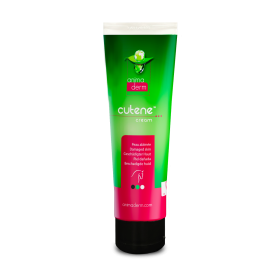Crusts on the legs: Case n°1: pastern eczema
Why do scabs appear on your horse's legs? Is it humidity? hygienic conditions? how to treat it?
The first thing to know is that mud mange is a catch-all term for crusty pathology on a horse's legs. Although the symptoms are virtually the same, mud mange can initially be a simple skin irritation, eczema, an infected rubbing sore or dermatophilosis, chorioptic mange or old photosensitization if it affects a balzane. Of course, treatments differ according to the pathology. But it's crucial to be able to identify it to get rid of it.
Here's one of the most common "mud fever" encountered in winter: pastern eczema (or irritation). Here's how to recognize it and treat it appropriately.
PASTERN ECZEMA
As its name suggests, it is often found in the hollow of the pastern, on thin, often pinkish skin. Because of its location, this skin is subject to the vagaries of the climate and the environment, without being able to breathe and dry out, especially in winter. It becomes irritated, weakened and a wide-open door to bacteria, leading to the appearance of crusts of varying thickness.
From a skincare point of view, this area needs to be treated with the utmost gentleness. Indeed, any aggressive product (classic anti-bacterial soap, sulfur, cade...) will eliminate crusts but increase skin fragility. Recurrence is therefore frequent. On the other hand, if the area appears to be deeply infected, it goes without saying that you should seek advice from your vet.
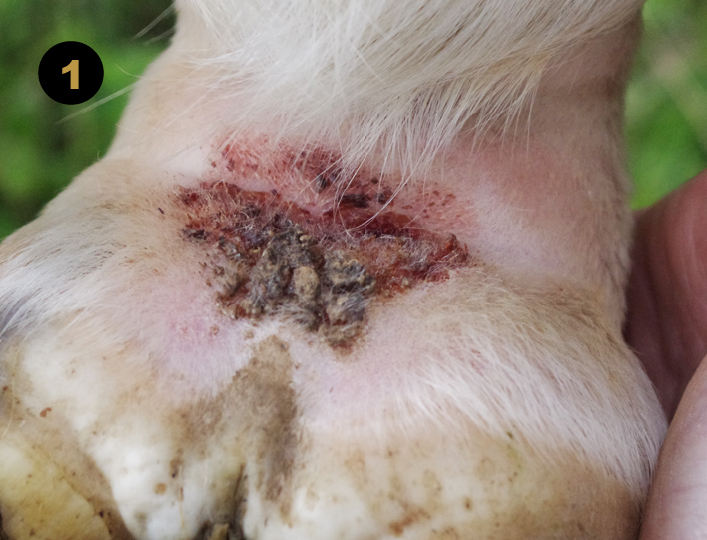
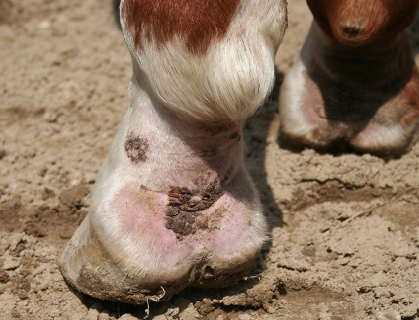
Shampoo every 3 or 4 days, but not more often, as water can become irritating to weakened skin. If mud gets in between shampoos, brush with a soft brush.
Cleansing with SHAMPOO TEA TREE will sanitize the area (tea tree's strong antibacterial power), soften scabs and leave a protective surface layer on the skin for 24 hours, limiting irritation. Leave on for a few minutes before rinsing, then MUST dry with a clean terry towel after shampooing.
Using the shampoo glove also makes it possible to apply shampoo more effectively without rubbing or irritating the skin, and reduces product waste.
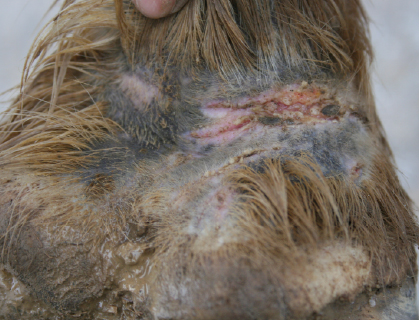
Clay, honey, aloe, beeswax, rose hip oil and zinc, among others, act like a repairing poultice on damaged skin.
CUTENE is water-resistant, preventing moisture from lodging in the pastern. If you're working in the quarry, protect the area for the duration of the session to prevent sand from sticking. The rest of the time, leave in the open air.
If the horse is in pasture, keep it dry for a few days (until the skin is more resistant).
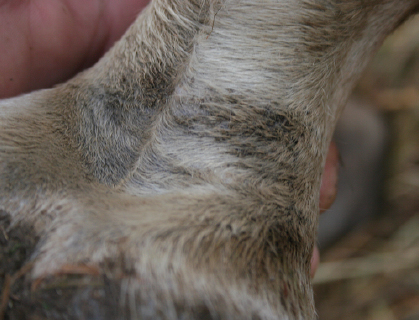
As the hollow of the pastern has been weakened, we recommend regular application (1 to 2 times a week) of a waterproof, moisturizing, neutral protective balm for long-term skin protection.
Avoid anti-bacterial treatments and sulfur, as these will dry out the skin and make it "crack" again.
 ANIMADERM S.A.S
ANIMADERM S.A.S


